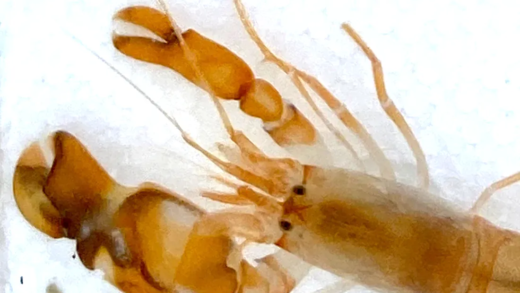Bats are unique flying mammals, playing vital roles in ecosystems through pest control, pollination, and seed dispersal. They communicate using echolocation and vocalizations, exhibit interesting behaviors, and face significant threats such as habitat loss and disease. Protecting bats requires awareness, habitat preservation, and community involvement.
What are Bats?
Bats are unique flying mammals that belong to the order Chiroptera, which translates to “hand-wing.” This name reflects their distinct wing structure, where their elongated fingers are covered by a thin membrane of skin called the patagium. Bats are the only mammals capable of sustained flight, a trait that sets them apart from other flying animals.
Globally, there are over 1,400 species of bats, making them the second largest order of mammals after rodents. They can be classified into two main suborders:
- Megachiroptera: These are the larger fruit bats, often referred to as flying foxes. They primarily feed on fruit and nectar.
- Microchiroptera: This group includes smaller bats that mainly consume insects. They are known for their echolocation abilities, which help them navigate and hunt in complete darkness.
Bats play a crucial role in many ecosystems, contributing to pollination, seed dispersal, and insect population control. Understanding these fascinating creatures is essential for appreciating their ecological significance.
Bats as Flying Mammals
Bats are remarkable as the only mammals that can truly fly. Unlike birds, which have feathers, bats have wings formed from their forelimbs. The structure of their wings allows for incredible maneuverability and speed, making them adept hunters at night.
Their flight is powered by strong muscles and a lightweight skeletal structure, which provides the necessary balance between strength and agility. Bats can reach speeds of over 60 miles per hour (97 kilometers per hour) during flight, showcasing their unique adaptations to the aerial lifestyle.
Additionally, bats possess excellent echolocation abilities. By emitting high-frequency sounds and listening to the returning echoes, they can accurately locate objects and prey in total darkness. This adaptation is vital for their survival, especially for insect-eating species.
Types of Bats
The diversity of bat species is astounding, with various adaptations that suit their specific habitats and diets. Here are some notable types:
- Fruit Bats: These large bats, like the flying fox, primarily consume fruit and are essential for pollination.
- Insectivorous Bats: These smaller bats, such as the little brown bat, feed on insects and help control pest populations.
- Vampire Bats: Known for their unique feeding habits, these bats consume blood from other animals.
Bats are found on every continent except Antarctica, thriving in various environments, from tropical rainforests to arid deserts. Their adaptability and diverse diets make them a fascinating subject of study for ecologists and wildlife enthusiasts alike.
Bat Navigation: Mastering the Dark
Bats are remarkable for their ability to navigate in the dark, primarily using a sophisticated system known as echolocation. This process allows bats to emit high-frequency sounds that bounce off objects in their environment, returning echoes that inform them about the location, size, and shape of obstacles or prey.
The mechanics of echolocation involve:
- Sound Emission: Bats produce sounds that can be as high as 100 kHz, far beyond human hearing.
- Echo Reception: They listen for the echoes that return from these sounds, processing the information almost instantaneously.
- Spatial Awareness: Bats can determine distance and direction based on the time it takes for the echo to return.
This incredible ability not only aids in hunting insects but also helps them avoid obstacles during flight. Some species can even adjust their calls based on the environment, showcasing their adaptability. Understanding bat navigation illuminates how these flying mammals thrive in various ecosystems, even at night.
The Vital Role of Bats in the Ecosystem
Bats play a crucial role in maintaining healthy ecosystems. As natural pest controllers, bats consume vast quantities of insects, including many agricultural pests. A single bat can eat up to 1,200 insects in just one hour!
Additionally, bats contribute to:
- Pollination: Many bat species, particularly fruit bats, are vital for pollinating plants, including agave and various fruit trees.
- Seed Dispersal: By consuming fruits and excreting seeds, bats help regenerate forests and maintain plant diversity.
Without bats, ecosystems would struggle to maintain balance. Their decline could lead to increased pest populations and reduced plant diversity, highlighting the importance of protecting these unique mammals.
Myths About Bats: Clearing the Air
Many myths surround bats, often leading to fear and misunderstanding. One common myth is that all bats are bloodsucking vampires. In reality, only three species of bats, known as vampire bats, feed on blood, and they do so without harming their hosts.
Other prevalent misconceptions include:
- Bats are flying rodents: Bats are not rodents but belong to their own order, Chiroptera, which means “hand-wing”.
- Bats are blind: Bats have functional eyes and can see quite well; their echolocation simply enhances their ability to navigate.
Addressing these myths is essential for promoting awareness and conservation efforts. Understanding bats and their behaviors fosters appreciation rather than fear, encouraging protective measures for these vital creatures.
Bat Communication: How Bats Talk to Each Other
Bats communicate using a variety of vocalizations and body language. Their communication is essential for social interactions, especially in species that live in colonies. The sounds they produce range from high-frequency echolocation calls to social sounds used during interactions. Bats can emit up to 1,000 different sounds, which help them convey information about their location, food sources, and even mating calls.
Some common forms of bat communication include:
- Echolocation Calls: Used primarily for navigation and hunting, these high-pitched sounds help bats locate prey and avoid obstacles.
- Social Calls: Used for group coordination and communication within roosting colonies.
- Mating Calls: Certain species produce specific sounds to attract mates during the breeding season.
Understanding bat communication can provide insights into their social structures and behaviors, highlighting their intelligence and adaptability.
Common Bat Behaviors: Daily Life of Bats
Bats exhibit a range of fascinating behaviors that contribute to their survival. These behaviors can be categorized into feeding, roosting, and social interactions. Bats are nocturnal creatures, primarily active at night, which influences their daily routines.
Some notable bat behaviors include:
- Foraging: Bats often fly in loops and zigzags while hunting for insects, using echolocation to detect their prey.
- Roosting: Bats typically roost in large groups in dark, secluded areas such as caves, trees, or buildings, which provide safety from predators.
- Social Grooming: Many bat species engage in grooming behaviors, strengthening social bonds within colonies.
These behaviors illustrate the adaptability and ecological importance of bats, showing how they interact with their environment and each other.
Threats to Bat Populations: Challenges Bats Face Today
Bats face numerous threats that jeopardize their survival. Understanding these challenges is crucial for conservation efforts. Some of the primary threats include:
- Habitat Loss: Urbanization and deforestation lead to the destruction of roosting and foraging habitats.
- Climate Change: Changes in climate patterns can affect food availability and breeding cycles.
- White-nose Syndrome: This fungal disease has devastated bat populations in North America, causing significant declines in certain species.
Addressing these threats is vital for the conservation of bats, as their decline can have severe consequences for ecosystems.
Protecting Bat Populations: Conservation Efforts
Protecting bat populations requires collective action and awareness. Here are some steps individuals and communities can take:
- Habitat Preservation: Support conservation initiatives that protect natural habitats and promote biodiversity.
- Education: Raise awareness about the ecological importance of bats and dispel myths that contribute to fear.
- Participate in Citizen Science: Engage in local bat monitoring projects to help track populations and health.
By taking these actions, we can contribute to the protection of bats and ensure their role in our ecosystems continues for generations to come.





Comments are closed.